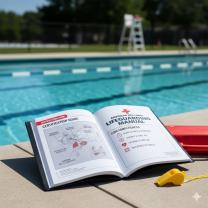Who are the suggested participants for individual tracer activity?
An individual tracer activity typically involves a single person or individual who is tasked with tracing or tracking a particular process, workflow, or set of actions within an organization or system. The goal of this activity is to gather data, assess efficiency, identify bottlenecks, or monitor compliance with established procedures. The choice of participants for an individual tracer activity can depend on the specific objectives and scope of the task. Here are some examples of suggested participants for different types of individual tracer activities:
Quality Control Inspector: In manufacturing or production settings, a quality control inspector may be tasked with tracing the production process to ensure that products meet quality standards and that each step in the manufacturing process is followed correctly.
Compliance Officer: In industries with regulatory requirements, a compliance officer may conduct individual tracer activities to ensure that employees are following established compliance protocols and regulations.
IT Auditor: An IT auditor may trace network activity or data flow within an organization's IT systems to identify security vulnerabilities, detect unauthorized access, or ensure compliance with data protection laws.
Process Improvement Specialist: Individuals responsible for process improvement may conduct tracer activities to identify inefficiencies or areas for improvement in a workflow or business process.
Logistics Coordinator: In supply chain and logistics operations, a logistics coordinator may track the movement of goods, monitor inventory levels, and identify any delays or issues in the transportation process.
Healthcare Auditor: In healthcare settings, an auditor may trace the patient journey through various departments and stages of care to ensure proper documentation, compliance with regulations, and patient safety.
Financial Analyst: A financial analyst may conduct individual tracer activities to track financial transactions, monitor budget adherence, or trace the flow of funds within an organization.
Project Manager: Project managers may conduct tracer activities to monitor the progress of a project, track tasks, and ensure that the project stays on schedule and within budget.
Customer Service Representative: In a customer service role, an individual may track and trace customer interactions to monitor service quality, response times, and customer satisfaction.
Environmental Compliance Specialist: In environmental management, a specialist may conduct tracer activities to ensure that environmental policies and regulations are followed in activities like waste disposal or emissions control.
Safety Officer: Safety officers may conduct individual tracer activities to track safety procedures and incidents within a workplace, ensuring that safety protocols are followed to prevent accidents.
Legal Compliance Officer: In legal departments, compliance officers may track contracts, legal documents, and regulatory compliance to ensure that the organization is meeting its legal obligations.
The specific participant will depend on the nature of the activity and the objectives you are trying to achieve. In some cases, the same individual may have multiple roles, such as a compliance officer also serving as an auditor. It's important to clearly define the purpose and scope of the tracer activity and select the participant accordingly.
Individual Tracer Activity: Suggested Participants and Their Roles
An individual tracer activity is a type of performance improvement (PI) activity that involves tracing a patient or resident through their care journey to identify areas for improvement. This activity can be conducted by any member of the healthcare team, but it is often led by quality improvement (QI) professionals, such as nurses or physicians.
Here are some suggested participants for an individual tracer activity:
- Quality improvement professionals: QI professionals have the expertise and experience necessary to conduct tracer activities effectively. They are also trained to identify and analyze data to identify areas for improvement.
- Clinical staff: Clinical staff, such as nurses, physicians, and therapists, have firsthand knowledge of the patient care process. They can provide valuable insights into the challenges and opportunities for improvement.
- Patient or resident representatives: Patient or resident representatives can provide the perspective of the patient or resident and their family. Their input can be helpful in identifying areas where the care experience can be improved.
The roles of the participants in an individual tracer activity will vary depending on the specific activity and the goals of the PI initiative. However, in general, the QI professional will be responsible for leading the activity, collecting and analyzing the data, and developing recommendations for improvement. The clinical staff will be responsible for providing insights into the care process and identifying areas for improvement. The patient or resident representatives will be responsible for providing the perspective of the patient or resident and their family.
Enhancing Survey Accuracy: Selecting Participants for Tracer Activity
When selecting participants for a tracer activity, it is important to consider the following factors:
- Patient or resident population: The participants should be representative of the patient or resident population that is being surveyed. This will help to ensure that the results of the tracer activity are accurate and generalizable.
- Clinical setting: The participants should be from the clinical setting where the survey is being conducted. This will help to ensure that the tracer activity is relevant to the specific needs of the setting.
- Care journey: The participants should be at a stage in their care journey where the survey is relevant. For example, if the survey is about patient satisfaction with discharge planning, the participants should be nearing discharge.
By considering these factors, you can select participants for your tracer activity who will help you to generate accurate and informative results.
Collaborative Surveying: Identifying Ideal Participants for Tracer Exercises
Collaborative surveying is a type of survey research that involves multiple stakeholders. This type of research can be used to gather diverse perspectives and to develop a more comprehensive understanding of a complex issue.
When identifying ideal participants for a tracer exercise in collaborative surveying, it is important to consider the following factors:
- Stakeholder representation: The participants should represent the different stakeholders who are involved in the care process. This may include patients, residents, families, clinicians, administrators, and policymakers.
- Expertise: The participants should have the expertise necessary to provide valuable insights into the topic of the tracer exercise.
- Availability: The participants should be available to participate in the tracer exercise and to provide feedback.
By considering these factors, you can identify ideal participants for your tracer exercise who will help you to gather comprehensive and informative data.
Overall, the selection of participants for a tracer activity is an important step in ensuring the accuracy and relevance of the results. By considering the factors outlined above, you can select participants who will help you to achieve your goals.













